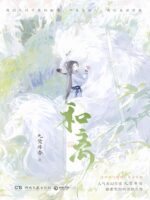I Have A Store C176
by MarineTLChapter 176: Grinding Tofu
The huanghuali wood in the cave was all carried out one by one. Not a piece more, not a piece less—counting the one from Zhou Yimin’s home, there were exactly eighty logs. The thickest one was so large it couldn’t be hugged by a single person.
A portion of it was directly loaded onto the truck.
One trip wasn’t enough to carry it all.
Based on current market rates, the carpenter gave a valuation. To Zhou Yimin, it was a giveaway price, but to the villagers’ understanding, it wasn’t cheap at all.
At the very least, if they were asked to pay a few yuan, even ten yuan, for a single log, they’d definitely consider that foolishness and refuse.
What couldn’t be loaded for now was stacked on the empty lot near the village school.
In the end, once everything was calculated, the money made from selling the wood just about equaled the price of the earlier truckload of corn. It was still a bit short, but Zhou Yimin waved it off and said to call it even.
Zhou Yimin then had someone clean the village’s stone mill.
“Uncle Sixteen, what are we grinding?” the person cleaning the mill asked curiously.
“Making some tofu.”
He had brought back the soybeans he once bought for a yuan a bag. Today, he figured he’d make some tofu to eat.
The village had only one stone mill, and it was shared.
“Then let us help you turn the mill,” the man offered readily.
Zhou Yimin shook his head. “Doesn’t the production team have a donkey? Go get it.”
If there’s a donkey, why make people do it?
The man gave a wry smile. “The donkey’s off today. We can’t dare pull it out to grind, or the Party Secretary will scold us to death.”
Even the production team’s donkey wasn’t made to work every day. In the countryside, livestock was often treated more preciously than people—fed well and cared for.
Zhou Yimin laughed. “Well then! I’ll trouble you all.”
He wasn’t grinding just three or five jin of soybeans—it wasn’t something he could manage alone. His plan had been to borrow the production team’s donkey.
Who knew that even a donkey had a day off? Meanwhile, people in the countryside had no rest days at all—working basically every single day.
In later generations, jokes about the production team’s donkey became wildly popular, but those people had no idea how long the donkey worked or how often it rested.
“Hehe! No big deal.”
They were quite happy to help Zhou Yimin.
Zhou Yimin never let those who helped him work come out of it with a loss.
Once the stone mill was cleaned, Zhou Yimin carried over the soybeans. Everyone looked and widened their eyes—was he really going to grind this much?
“Uncle Sixteen, you’re turning all this into tofu?”
Zhou Yimin nodded. “All of it.”
Well damn!
Someone immediately suggested calling two or three more people to help. So, three or four women working in the village cafeteria were called over.
To make tofu, the first step was to flake and dehull the beans. The dry soybeans were fed into the stone mill in batches, crushed to remove the hulls and flatten them. Originally, Zhou Yimin had planned to throw out the hulls, but of course, the villagers wouldn’t waste them.
After all, they didn’t even throw away rice husks or wheat husks—why would they toss out soybean hulls?
So, the people from the village kitchen collected the hulls.
The dehulled soybean flakes were soaked in water. The women were very familiar with these steps—Zhou Yimin didn’t need to micromanage at all. Honestly, he could’ve just gone home to rest.
“Save a portion for tofu pudding,” Zhou Yimin said.
Many people couldn’t tell the difference between tofu pudding, tofu flower, and tofu itself.
Actually, the difference lay in how long they were allowed to coagulate. Tofu pudding has the shortest setting time, followed by tofu flower. If tofu flower is left to set longer, it becomes tofu.
When it came to tofu pudding, the sweet vs. savory debate started again.
In the south, tofu pudding is called “water tofu” or “tofu flower,” and is only sweet. Southerners believe the silky, sweet taste is better, whether sprinkled with white sugar or drizzled with syrup—it’s sweet without being cloying.
In the north, tofu pudding is mostly eaten for breakfast, with a savory gravy poured on top.
The gravy is made with fresh lamb slices and a rich broth. The cooking technique has to be just right—stewing won’t do, or the freshness will be lost.
Once the gravy is ladled on and the condiments are added, the aroma of the tofu pudding immediately fills the air.
In truth, not just tofu pudding—even tofu itself is made differently in the north and south.
Northern tofu is also called “brine tofu,” made using brine as the coagulant. The calcium and magnesium ions in the brine react with the soybean proteins to solidify it.
After solidifying, it is pressed using the tofu-on-tofu method for about 30 minutes to drain excess moisture and reach the desired quality. The result is tofu with a firmer and coarser texture.
Southern tofu, on the other hand, uses gypsum (calcium sulfate) as the coagulant, hence “gypsum tofu.” Gypsum dissolves slowly and coagulates more slowly than brine.
There’s also a third kind—glucono delta-lactone (GDL) tofu. The coagulant here is glucono delta-lactone.
GDL induces slower coagulation, which allows the soy milk to be sterilized at high temperature, then mixed with GDL and sealed in containers.
This kind of tofu has a far longer shelf life than the other two.
Nutritionally, based on equal weights, the ranking is: Northern tofu > Southern tofu > GDL tofu.
Especially when it comes to calcium content, southern tofu is about equal to milk by weight, while northern tofu has even more, and GDL tofu can almost be ignored.
“No problem! Yimin, just sit tight.”
Everyone was enthusiastic and worked with great energy.
Because they knew—if Zhou Yimin was making that much tofu, his family definitely couldn’t finish it all. And based on how he usually did things, he’d most likely share it with everyone.
If everyone gets a share, of course they’ll work with extra motivation!
“We’ve got brine in the village, right?” Zhou Yimin asked.
If there wasn’t any, he’d have to use some gypsum and make the southern kind of tofu. Gypsum was easier to make—leftover lime from the last house-building project could be processed into gypsum.
“We’ve got it. Granny Seven used to make tofu,” someone quickly responded.
After soaking, the dehulled soy flakes were ready to be ground into soy milk.
This step usually required two people—one constantly turning the mill with a wooden lever, and the other feeding in the soybeans and water. With the stone mill turning and water flowing, the soy flakes were ground into a slurry.
This soy milk then had to be filtered to remove the soybean pulp.
The resulting soy milk was poured into a tightly-woven flour sack and squeezed until the liquid drained into a bucket.
Then the pure soy milk was poured into a large pot, brought to a boil, and transferred to a wooden barrel with the right amount of brine. A wooden paddle was used to stir it thoroughly, and then it was left to cool and coagulate.
Finally, the village women brought out slotted wooden molds about 60×60×4 cm in size. The base was lined with a white cloth, and the coagulated tofu pudding was ladled into the molds. Then they folded the cloth over it, placed another board on top, added stones, and pressed it to reduce moisture and shape it.
Of course, they didn’t forget to set aside a portion of tofu pudding and bring it to Zhou Yimin’s home.
(End of Chapter)










0 Comments